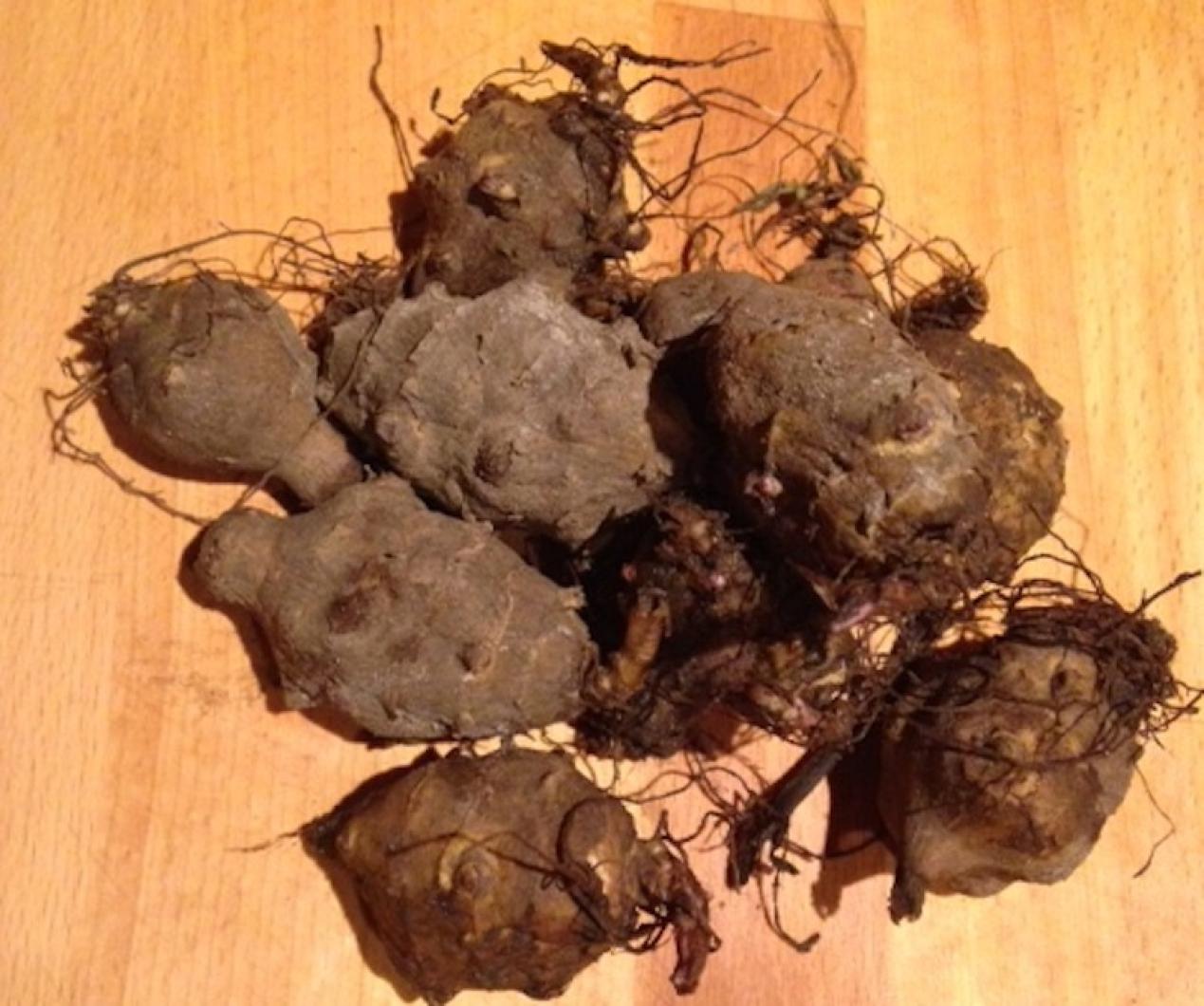The jury is in on the Jerusalem artichoke. I am hooked on these terrific tubers.
This regional native has been both praised and persecuted by gardeners and epicureans. Last week, though, after being gifted some, I decided to dive into both controversies.
On the one hand, the Jerusalem artichoke is an indigenous plant. Don’t be deceived by its name: roots or tubers of this plant were gathered and eaten by Native Americans.
French explorer Samuel de Champlain found them cultivated on Cape Cod in 1605. Seeing their local culinary use, he sent specimens back to France. Over time, Jerusalem artichokes became a favorite in Europe, this immigrant even being named Best Soup Vegetable at the 2002 Nice Festival of Heritage French Cuisine.
Jerusalem artichokes are neither from Jerusalem nor are they artichokes. Their scientific name, Helianthus tuberosus, says it all, with a translation of sunflower with tuber. As sunflowers, they look the same as the well-known annual variety; however, below the surface things are different with this perennial. The tubers are telltale, since the annual sunflower doesn’t have the edible bulbous roots of the perennial variety.
Their name was likely a corruption of the Italian word girasola, which means “turning to the sun,” that describes this type of flower’s sun-following movement, combined with artichoke perhaps due to its similar taste. A more descriptive name, sunchoke, was developed in the 1960s by farmers trying to market this easy to grow, but unfamiliar, vegetable. Earth apple, sun root, French potato, and Canadian truffle are other aliases.
Easy to grow might be an understatement, since sunchokes are known for their aggressive nature and ability to spread (sometimes uncontrollably) in your yard and garden. Perhaps this will be a gift that keeps on giving, so I will plant some in a container to keep it managed.
The rest of the bounty went into the soup pot. Although they are sunflowers, the seeds of this plant are small, so it is the root, or tuber, that is the edible part. Resembling ginger, the knobby nuggets can be consumed raw or cooked with the skin or without, and as a vegetable or starch. Even alcohol can be produced from sunchokes, and in Germany much of the sunchoke harvest is used to make Topinambur, a brandy-like spirit.
Sunchokes are not everyone’s favorite. Seventeenth century botanist and farmer John Goodyer made his opinion on this vegetable very clear when he explained, “which way soever they be dressed and eaten, they stir and cause a filthy loathsome stinking wind within the body, thereby causing the belly to be pained and tormented, and are a meat more fit for swine than men.”
For some, sunchokes do represent pain and suffering, causing gastrointestinal discomfort and gas. The tubers contain inulin, which is difficult to digest. Some culinary sources suggest that peeling the skin or cooking instead of eating sunchokes raw will help.
My sunchoke experience was positive with no ill effects to report. Perhaps it was luck, moderation, and a very strong stomach that were on my side.
Suzan Bellincampi is director of the Felix Neck Wildlife Sanctuary in Edgartown, and author of Martha’s Vineyard: A Field Guide to Island Nature.




Comments
Comment policy »